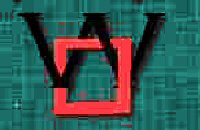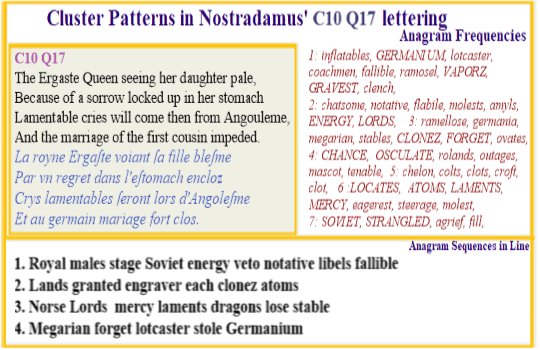 Analyses of all verses
Analyses of all verses
|
 Web Site
Web Site |
 All
Sefirots All
Sefirots |
Nostradamus C10 Q17: The Queen whose mutant grand-child determines mankind's future.
Copyright: Allan Webber, December 2015
 Nostradamus' text implies a difficult pregnancy by a Queen to which the
term Ergaste is applied.
Nostradamus' text implies a difficult pregnancy by a Queen to which the
term Ergaste is applied.
This term is given by Nostradamus and although many inter,er to mould it to the story of Marie Antoinette he would not have needed to use this obscure word to achieve that end.
That he put it as he did, should tell us it has a more significant meaning that applies directly to Ergaste as a name.
Now 'Homo Ergaster' is the name given to a branch of the human line when 'Homo Erectus' evolved in Africa.
A similar thread as implied by this name can be found in verses on his most important theme, the evolution of humanity into a new species.
This idea of branching is a strong theme amongst the anagrams in this verse.
Another use of Ergaste was in Mysia in ancient Turkey and this was a place name which Galen identified as near a site of glistening metal.
ERGASTERIA is a place in Mysia, on the road from Pergamum to Cyzicus, and 440 stadia from Pergamum. 'Galen, in proceeding to Ergasteria from Pergamum, remarked a great quantity of metallic substance, which he calls molybdaena, Galen,de Medicam. Simp. 9.22.' (Leake, Asia Minor, p. 271.)
This naming possibility, with its elemental ties, is given some credibility by this verse's anagrams which include the name of a rare element called Germanium and the concept of gas vapours that are linked to energy supplies.
The anagrams build a picture that is consistent with the grievous exposure of an Eastern Mediterranean royal family to vapors given off by Soviet energy supplies. And Nostradamus provides the name d'Angouleme in his text which would make this event part of his new evolution / mutation and hence one that results in the cloning of the Royal Bourbon line.